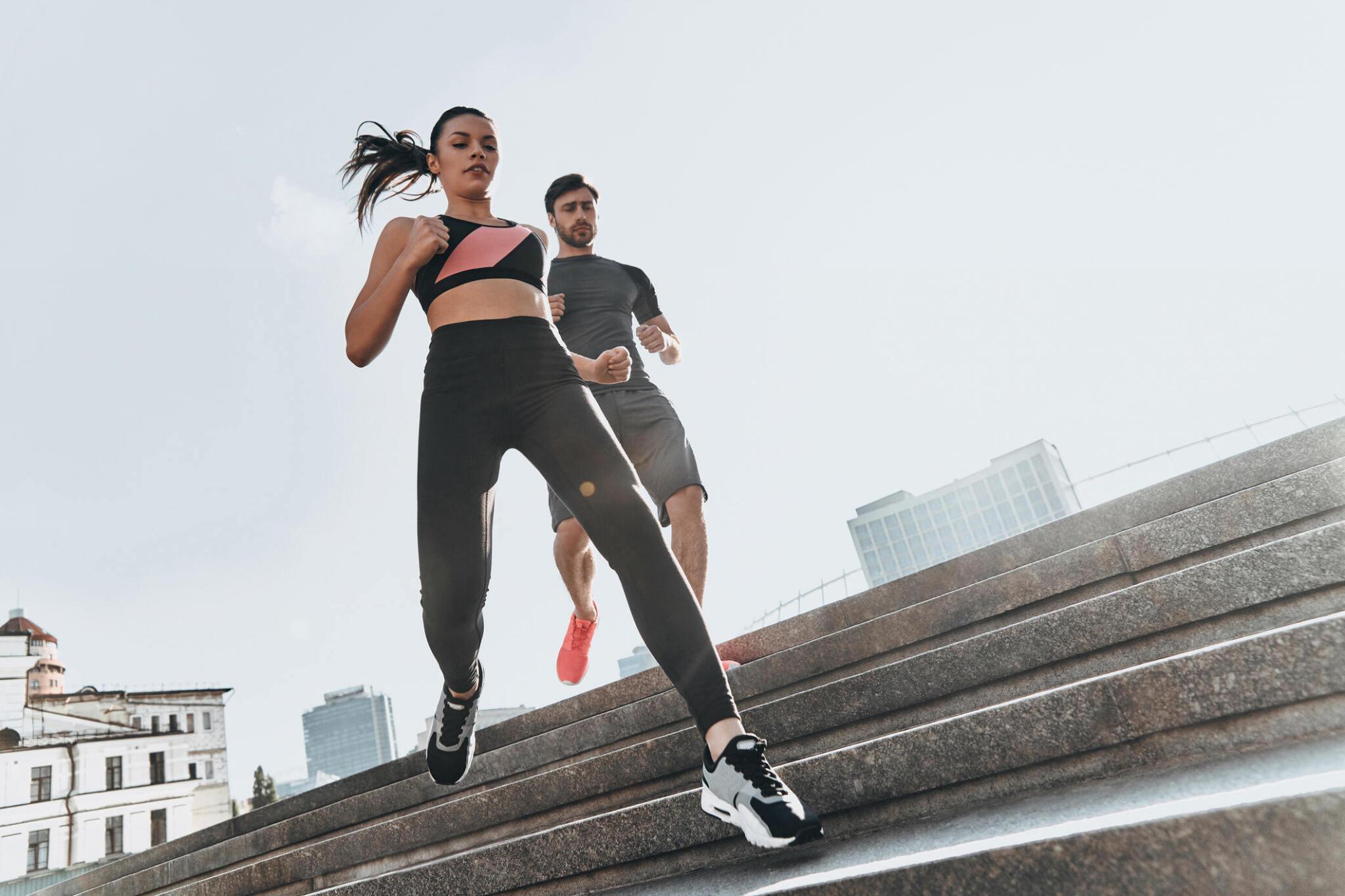What is the 80/20 cardio rule?
The 80/20 cardio rule involves doing 80 percent of your workout at a low-intensity slower speed, while saving your high-intensity speed for just 20 percent of your exercise. It’s a theory developed by exercise physiologist, Dr Stephen Seiler, who discovered that elite athletes like Eliud Kipchoge and Paula Radcliffe spend 80 percent of their training working at an easy pace, and only 20 percent going hard.
We can’t promise you a sub three hour marathon, but the science says the 80/20 exercise rule will get you better results than a consistently high-intensity workout. Work less but gain more, you say. Where do we sign?
What exercise is it suited for?
The 80/20 cardio rule is also known as the 80/20 running rule and it’s predominantly aimed at runners. It doesn’t matter if you’re a weekend warrior or in training for the Boston marathon, the 80/20 running rule doesn’t discriminate.
While it could probably be applied to rowing, cycling and other forms of cardio, the research is currently around runners, so you better lace up those runners.
What does it involve?
While the concept of 80/20 is easy to understand to anyone who suffered through primary school maths, how does it apply to running? Does it mean varying speeds within each individual run, or alternating the speed levels on separate runs? Does the duration of the run matter? And what if you mess up the maths and end up running 70/30 or 90/10?
The good news is that 80/20 is not a hard and fast rule. While you do have to go hard and fast, if your ratio is slightly off, you should still see a positive impact. And fast doesn’t have to mean the speed of light. As long as you are doing the majority of your workouts at a low intensity, and saving that high-intensity sweatfest for a smaller portion, you should be gold. Not necessarily gold medal gold, but working at maximum efficiency at least.
What does high-intensity running mean?
A high-intensity running workout should feel challenging. Your breathing should be deep and rapid, and you might start to sweat. If you are working at high-intensity, it should be difficult to say more than a few words. While it’s good to operate at high-intensity for some periods of exercise, it’s important not to overexert yourself. Those with underlying health conditions should consult their doctor before they attempt anything high-intensity.
What does low-intensity running mean?
Again, low-intensity running will translate to a different pace for every run, but generally speaking, it’s a pace or speed that you’re happy to hold a conversation at. It doesn’t matter what you talk about - although remember, there’s nothing harder to listen to than a marathon bore. Save your stats for yourself and focus on being able to maintain a decent pace and chat, and the rest will fall into place.
What are the benefits of the 80/20 cardio?

The benefits to 80/20 running are huge. In addition to getting more for less, you should also experience a runner’s high from the release of endorphins during your high-intensity workouts. Spending more time running at an easier pace should also reduce your chance of injury, while there are numerous other mental and physical health benefits too.
What does it do to your body?
The 80/20 running rule should improve your cardiovascular health, aid your lung capacity and increase your endurance. It should also help speed up your recovery rate, which means that you can spend more time running. If you want to, that is. Mentally, 80/20 running, particularly the higher-intensity work - will still lead to the release of the endorphins at the end of the run, giving your mood a well-earned lift. That might be because you finished the run though.
Will it help you lose weight?
While 80/20 cardio or running can definitely contribute to weight loss as part of a healthy, targeted program, it’s unlikely to have an ozempic effect on its own. Depending on the amount of running you’re doing and the changes you’ve made in other parts of your life, 80/20 should help you tone up and possibly drop some pounds. But, as with all exercise, it should be approached and implemented sensibly. Overdoing it on the exercise front will only lead to burn out, injury or other more severe health issues.
Will it make you fitter?
If the world’s fastest marathoner, Eliud Kipchose, is anything to go by, definitely. At a more recreational level, following the 80/20 cardio rule has been proven to improve people’s speed and endurance, as well as reducing their chances of injury. This combination will allow runners to run further and more frequently (should they want to), increasing their fitness. The slower, low-intensity running will also help strengthen tendons and ligaments and make runners naturally stronger.
Does it matter if you don’t run often?
It doesn’t matter how often you run, the 80/20 rule will still have a positive effect on your overall fitness and levels of fatigue. If anything, those who run less frequently will see a greater benefit because these are the runners who often over-exert themselves in a bid to get more bang for their buck when they do run. Dr Seiler’s research showed that runners who train twice a week will get just as much benefit if they adopt the 80/20 rule for running as those who train twenty times. That’s the kind of research we like.
Are there any downsides to the 80/20 running rule?

Many recreational runners struggle to know what their real ‘fast’ and ‘slow’ paces can be. For these runners, the 80/20 exercise can present a problem because it calls for specific changes of pace in your program. That said, as long as you follow the basic guidelines for what a high-intensity run and a low-intensity run should feel like, and listen to your body, the 80/20 running rule should serve you well. If it’s good enough for the elites, it’s good enough for us.
Is this rule compatible with equipment?
The 80/20 running rule was made for the treadmill, as a treadmill allows you to track exactly what pace you’re running at, as well as record the duration of your exercise. And, with a treadmill, there’s no excuse for messing up the maths!
We have a number of different treadmills and stores across Perth, Mandurah, and Bunbury, as well as offering Australia-wide delivery on our huge range of exercise equipment. We even have flexible payment options like Afterpay, to ensure reliable fitness equipment is affordable and accessible. Explore our stores with the Orbit experts, or check out our online range.
Chat with the team for more information about our products can help your health and fitness journey, or browse our FAQs.

.png)